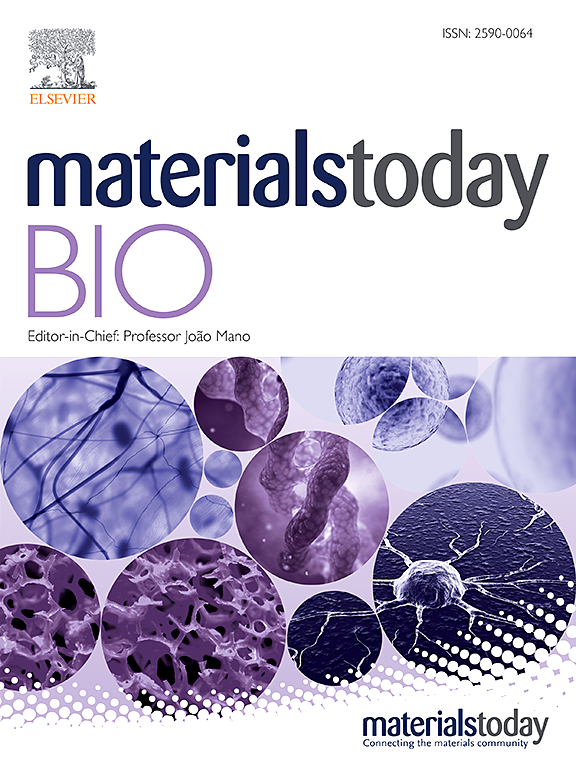热敏性ε-聚天冬酰胺-聚羟基乙酰胺水凝胶包裹的 BMSCs 可促进子宫内膜再生
IF 8.7
1区 医学
Q1 ENGINEERING, BIOMEDICAL
引用次数: 0
摘要
本文章由计算机程序翻译,如有差异,请以英文原文为准。

Thermo-sensitive ε-polylysine-heparin-poloxamer hydrogel-encapsulated BMSCs promote endometrial regeneration
Endometrium plays a key role in embryo implantation and maintenance of pregnancy. However, to repair endometrial injury is still a challenge. In recent years, hydrogel materials have been widely used as effective support matrices to prevent intrauterine adhesions after endometrial injury. They can also be used as preparation scaffolds for encapsulating MSCs and certain therapeutic drugs. This study aimed to develop a preparation scaffold with high tissue affinity, high viscoelasticity and controlled release for repair of endometrial injury. The scaffold utilized heparin poloxamer (HP) as the matrix material and ε-polylysine (EPL) as the functional excipient to prepare a hydrogel that is suitable for endometrial adhesion and further encapsulate BMSCs. Furthermore, a strategy of the thermo-sensitive EPL-HP hydrogel-encapsulated BMSCs were used for better homing of BMSC after transplantation into the rat endometrial injury model, so as to exert the potential of endometrial regeneration by activating Nrf2 to regulate SDF-1/CXCR4 axis.
求助全文
通过发布文献求助,成功后即可免费获取论文全文。
去求助
来源期刊

Materials Today Bio
Multiple-
CiteScore
8.30
自引率
4.90%
发文量
303
审稿时长
30 days
期刊介绍:
Materials Today Bio is a multidisciplinary journal that specializes in the intersection between biology and materials science, chemistry, physics, engineering, and medicine. It covers various aspects such as the design and assembly of new structures, their interaction with biological systems, functionalization, bioimaging, therapies, and diagnostics in healthcare. The journal aims to showcase the most significant advancements and discoveries in this field. As part of the Materials Today family, Materials Today Bio provides rigorous peer review, quick decision-making, and high visibility for authors. It is indexed in Scopus, PubMed Central, Emerging Sources, Citation Index (ESCI), and Directory of Open Access Journals (DOAJ).
 求助内容:
求助内容: 应助结果提醒方式:
应助结果提醒方式:


